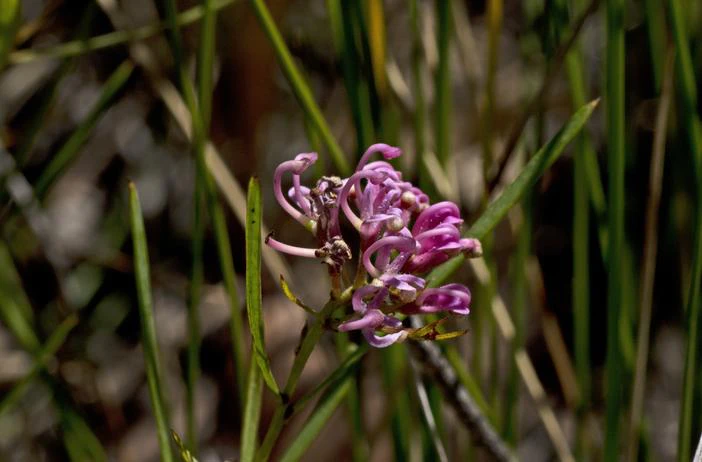Wallum Grevillea
(Grevillea leiophylla)
Wallum Grevillea (Grevillea leiophylla)
/
/

tjeales
CC BY-SA 4.0
Image By:
tjeales
Recorded By:
Copyright:
CC BY-SA 4.0
Copyright Notice:
Photo by: tjeales | License Type: CC BY-SA 4.0 | License URL: https://creativecommons.org/licenses/by-sa/4.0 | Uploader: Gderrin | Publisher: Wikipedia Commons






Estimated Native Range
Climate Requirements for Wentzville, Missouri
| This Plant | Your Site | Plant Suitability for Your Location | ||
|---|---|---|---|---|
| • Precipitation | 31" - 65" | 37" | Aquatic | Aquatic |
| • High Temp. | 81°F - 87°F | 89°F | Your summers may be too hot for this plant. | Too hot |
| • Low Temp. | 37°F - 54°F | 19°F | Your winter temperatures may be too cold for this plant | Too cold |
This plant should grow well at your location with about N inches per year (Y minutes per month) of irrigation.
Summary
Grevillea leiophylla, commonly known as Wallum Grevillea, is an evergreen shrub native to the sandy coastal heathlands, also known as ’wallum,’ in Eastern Australia, particularly in Queensland and New South Wales. It typically grows to a height of 2 feet (0.6 meters) and a width of 3-5 feet (0.9-1.5 meters). The plant has a mounding habit with narrow, linear leaves and bears profuse pink to red flowers that are rich in nectar, attracting birds and insects. The flowering season extends from winter through to summer, with peak bloom times varying by local climate.
Wallum Grevillea is valued for its long flowering period and its ability to attract wildlife, making it a favorite for use in native gardens, as a low hedge or informal screen, and in coastal landscaping due to its tolerance of salt spray. It is drought-tolerant once established, requiring minimal watering, and thrives in well-drained sandy or loamy soils. Full sun to part shade is ideal for promoting abundant flowering. While generally low-maintenance, it can be susceptible to root rot in poorly drained soils and may require protection from frost in cooler climates.CC BY-SA 4.0
Wallum Grevillea is valued for its long flowering period and its ability to attract wildlife, making it a favorite for use in native gardens, as a low hedge or informal screen, and in coastal landscaping due to its tolerance of salt spray. It is drought-tolerant once established, requiring minimal watering, and thrives in well-drained sandy or loamy soils. Full sun to part shade is ideal for promoting abundant flowering. While generally low-maintenance, it can be susceptible to root rot in poorly drained soils and may require protection from frost in cooler climates.CC BY-SA 4.0
Plant Description
- Plant Type: Shrub
- Height: 1-3 feet
- Width: 3-5 feet
- Growth Rate: Moderate
- Flower Color: Pink
- Flowering Season: Winter, Spring, Summer
- Leaf Retention: Evergreen
Growth Requirements
- Sun: Full Sun, Part Shade
- Water: Low
- Drainage: Medium, Fast
Common Uses
Bee Garden, Bird Garden, Butterfly Garden, Drought Tolerant, Groundcover, Hummingbird Garden, Low Maintenance
Natural Habitat
Sandy coastal heathlands
Other Names
Common Names: Dwarf Spider Oak
Scientific Names: Grevillea leiophylla, Hakea leiophylla
GBIF Accepted Name: Grevillea leiophylla F.Muell. ex Benth.